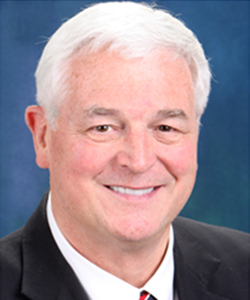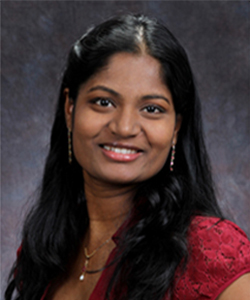Lucy Hobbs Taylor was the first known American woman to enroll in dental school. The year was 1865 and in the three decades that followed, a yearly average of just six women graduated from dental schools in the United States. A lot has changed since then.
Women Making Their Mark in Dentistry
Dental medicine has seen a gradual but steady increase in female applicants to dental school programs. “For context, my wife Dr. Brenda Harman was one of two females in a class of 160 when she entered dental school in 1971,” said Dr. William Harman, Associate Dean for Admissions and Student Services for the College of Dental Medicine. In the last 20 years, the number of women practicing dentistry in the United States has more than doubled to the current figure of approximately 60,000. And while women currently comprise just 32% of the active dental workforce, 2018 was the first year in which female dental school enrollees nationwide outnumbered their male counterparts at 50.5%.
In addition, American Dental Association (ADA) statistics show that close to half (49%) of US dentists under the age of 35 are women. If current trends continue, practicing female dentists will outnumber their male counter parts within the next decade. Similarly, the first class of dental students enrolled at Roseman University in 2011 was comprised of 22% female students. Today, the current enrollment of female students is 47%. And, the current applicant pool reflects a 50/50 split between male and female applicants.
Future of Dentistry
According to the ADA, female dentists continue to face unique challenges in the profession, but they have found and continue to find opportunities to move dentistry forward, contributing in various fields including academia, science and research, organized dentistry and advocacy. As male dentists of the baby boomer generation retire, the next era in dental medicine is likely to be led by women. “The boomers are retiring at a high rate of close to 10,000 per year,” said Kathleen T. O’Loughlin, DMD, the current (and first female) executive director of the ADA. “We are seeing a significant exodus of white males and a huge influx of women. Diverse women and millennials will become the majority of ADA members in the next five to 10 years,” she said. Fourth year dental student and president of the Roseman College of Dental Medicine Class of 2021, Heather Nichols, adds additional perspective, “I have noticed that many of my male classmates have entered the field of dentistry as a second career,” she said. “Whereas many of my female classmates have pursued their doctoral degrees after entering dental medicine as assistants, admins or hygienists,” she continued. “I found the contrast interesting as it occurred to me that women seldom get the luxury of changing careers.”
Dental medicine appeals to women interested in pursuing doctoral degrees for a variety of reasons, but key commonalities have emerged. For instance, female dentists may choose to work in clinical settings that offer flexible working hours and reduced administrative responsibilities. When you consider that women account for half of the US workforce, yet are still responsible for over 60% of household duties (for married of cohabitating heterosexual couples), flexibility in working hours is a key benefit for female practitioners seeking worklife balance.
Dr. Cherish Dunshee graduated from the College of Dental Medicine in 2020 having served as class president for two years and serving as president of the Dental Student Association. “I am now the breadwinner of the family for the first time in my nine-year marriage,” she said. “It’s been the greatest joy for me to provide for my family after being in school for so long, and to see my husband be so supportive and helpful with our one-year old daughter. He goes above and beyond what most fathers do.”
Mentoring the Next Generation
The availability and role of mentors is another key differentiator for women pursing dentistry. Mentorship is an important underpinning of women’s success in dentistry. Mentors don’t just pave the way for mentees’ success at dental school and in practice; they share invaluable wisdom and insights learned through their experiences in a male-dominated profession. “Having female dentists as role models is incredibly important to career decisions at all ages,” said Dr. Harman. College of Dental Medicine faculty, Dr. Angela Christensen agrees. “When I ask a little girl if she wants to be a dentist when she grows up, I see the thought has never occurred to her and then I see excitement as she realizes she could be a dentist too!,” she said. “It is rewarding to open minds to see all the options available. Our patients are (about) 50% female and thus 50% of our dentists are also.”
This is not lost on female dental students who are mindful of the work done by those who have come before. College of Dental Medicine alumnus Dr. Nadine El Ayouty, who served as president of the Class of 2020 and is currently in a post-doctoral program at The Ohio State University added, “The late Supreme Court Justice Ruth Bader Ginsberg stated, ‘Women will only have true equality when men share with them the responsibility of bringing up the next generation.’ I am proud to be part of the next generation of women in dentistry where we are no longer minorities in the field but slowly the majority; becoming leaders in our educational institutions and communities.”
Article by Joslyn Hatfield – shared from Roseman University’s spectRUm Fall 2020 publication



